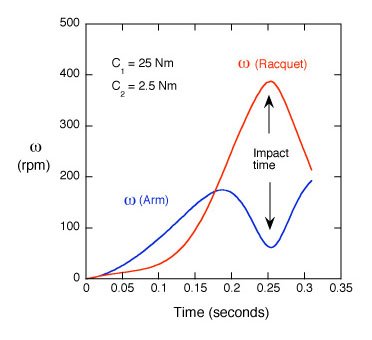First and foremost, all this physics stuff should be purged out of one's mind while playing - let's be clear about that! 
That said, I make sense out of all of this as follows. If you recall how I defined extension (in the extension discussion a few days ago), I said extension reaches a maximum just before impact. At that point, be it a forehand or serve, the hand can go no further, and reaches a maximal point where it slows down a lot. This sudden slowing down of the hand releases the wrist, and the racquet head accelerates to impact. At some point after impact, the wrist can release no further and starts dragging the hand/forearm, which causes the hand/forearm to pick up speed after impact into the follow through.
Well, what does this imply for coaches... that's a good question! I would say a really relaxed wrist, and a good runway into extension by laying the wrist back so there's enough room to accelerate the racquet head. I know I'm not being precise here, but you get the idea.
That said, I make sense out of all of this as follows. If you recall how I defined extension (in the extension discussion a few days ago), I said extension reaches a maximum just before impact. At that point, be it a forehand or serve, the hand can go no further, and reaches a maximal point where it slows down a lot. This sudden slowing down of the hand releases the wrist, and the racquet head accelerates to impact. At some point after impact, the wrist can release no further and starts dragging the hand/forearm, which causes the hand/forearm to pick up speed after impact into the follow through.
Well, what does this imply for coaches... that's a good question! I would say a really relaxed wrist, and a good runway into extension by laying the wrist back so there's enough room to accelerate the racquet head. I know I'm not being precise here, but you get the idea.



